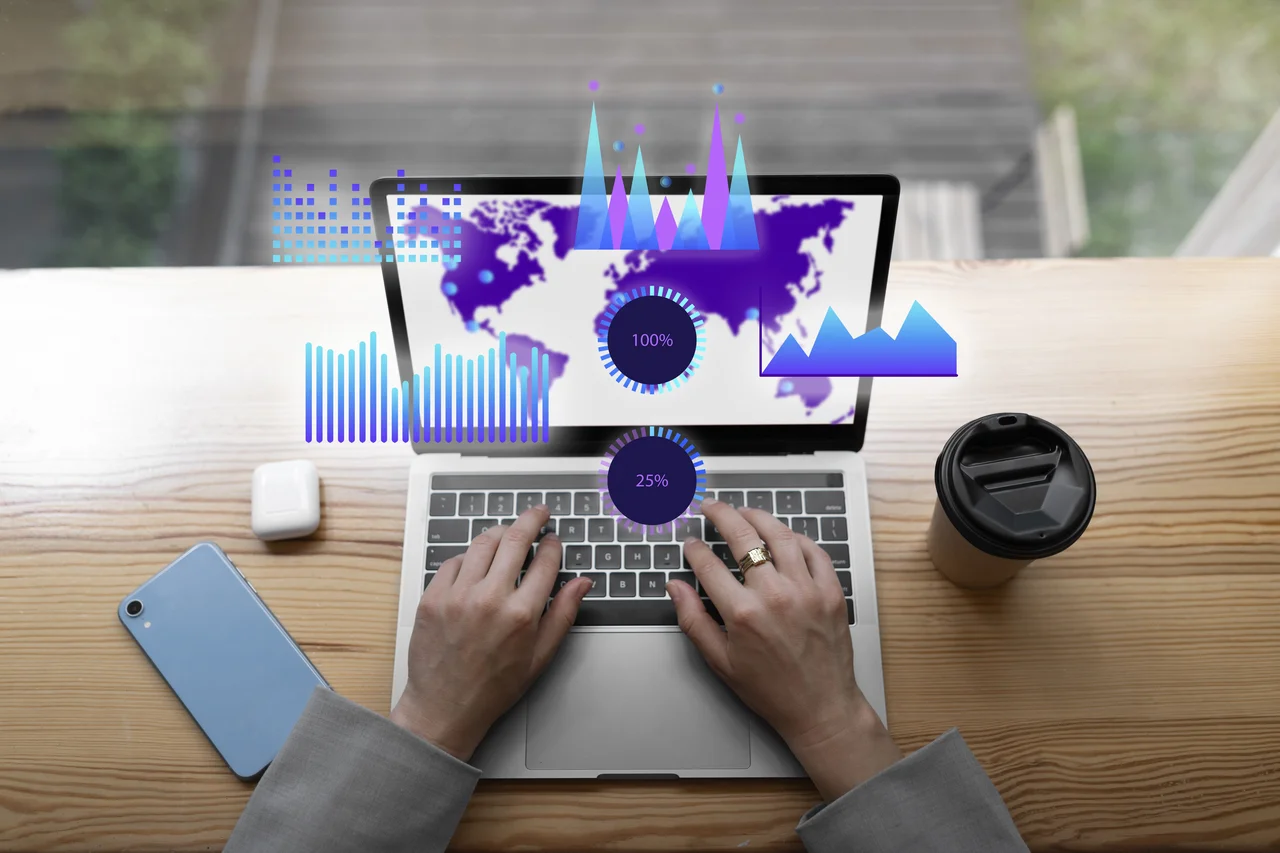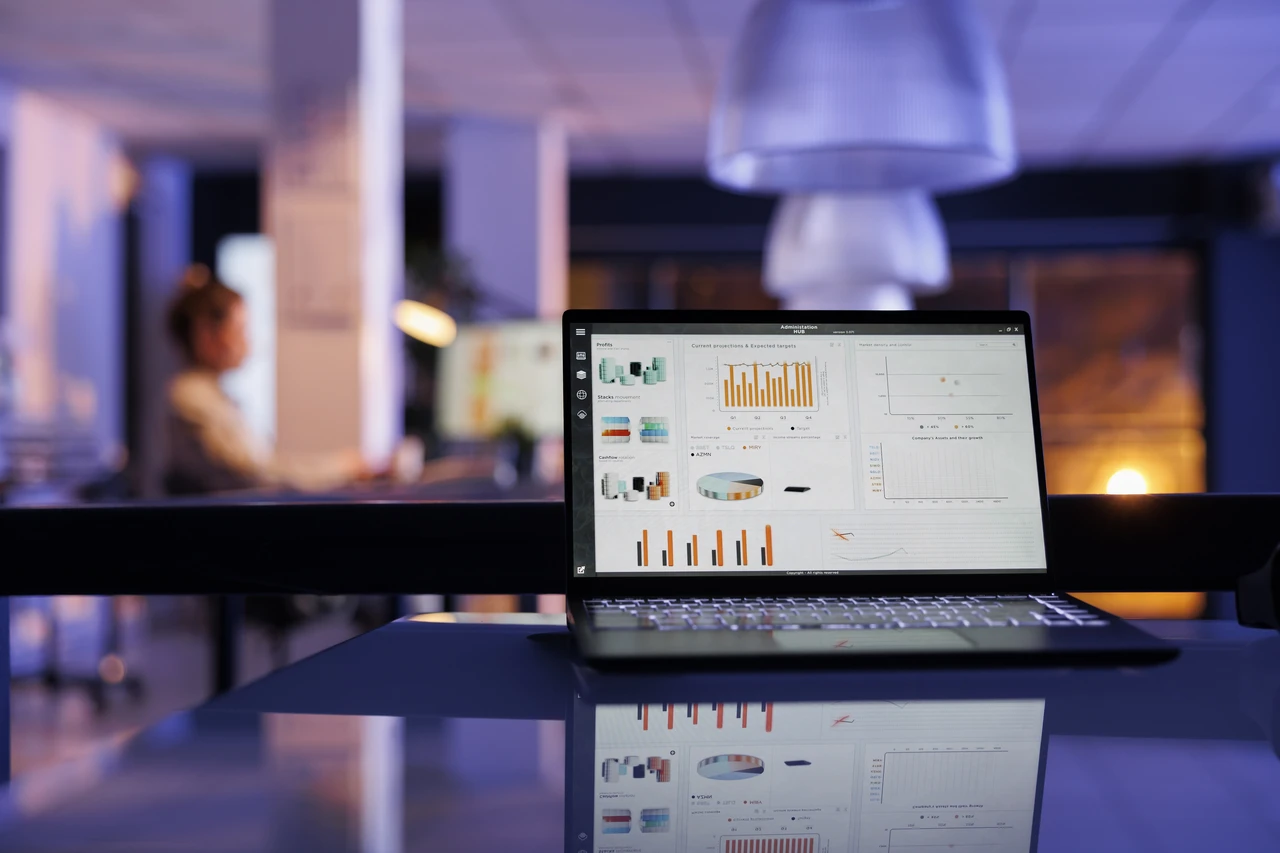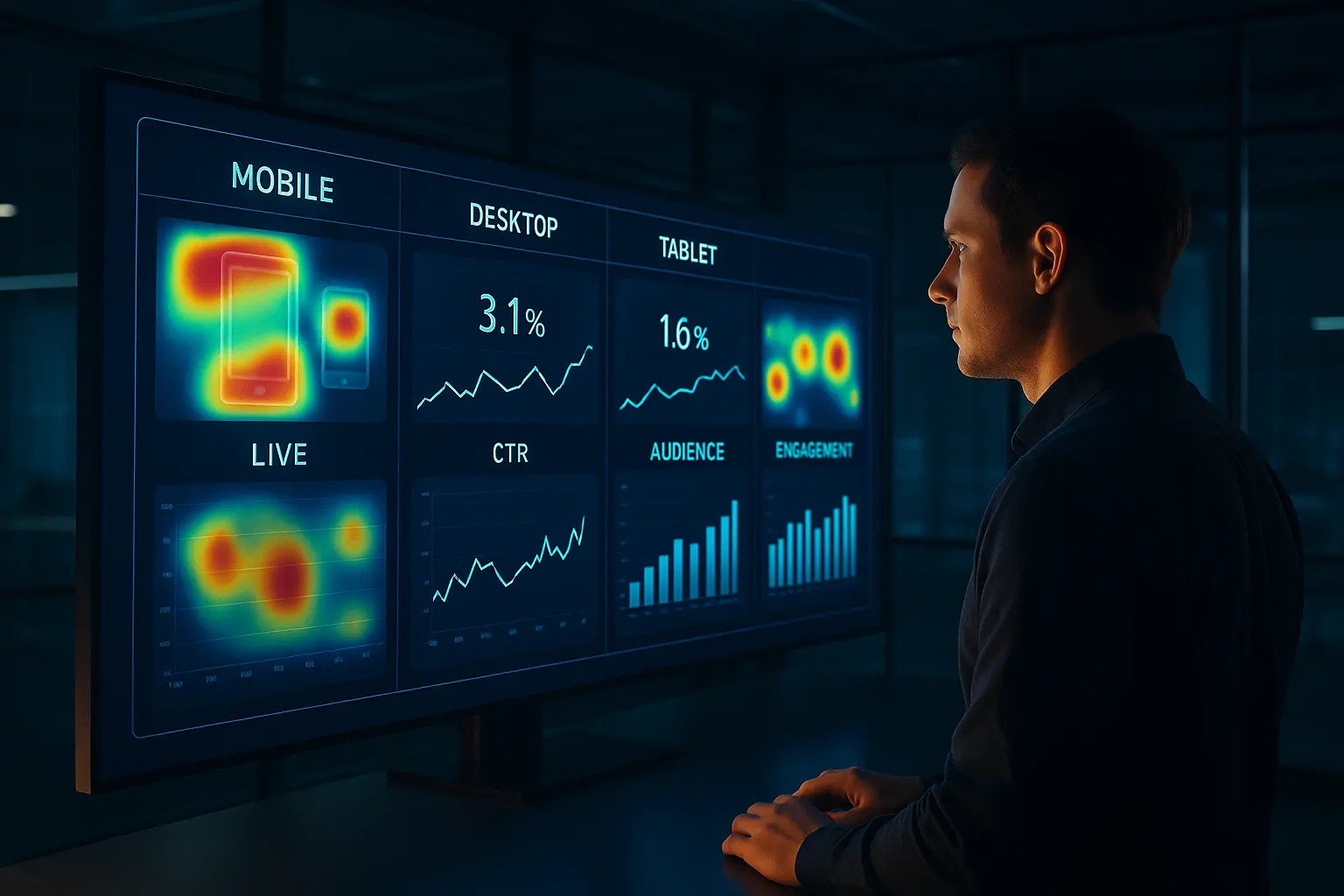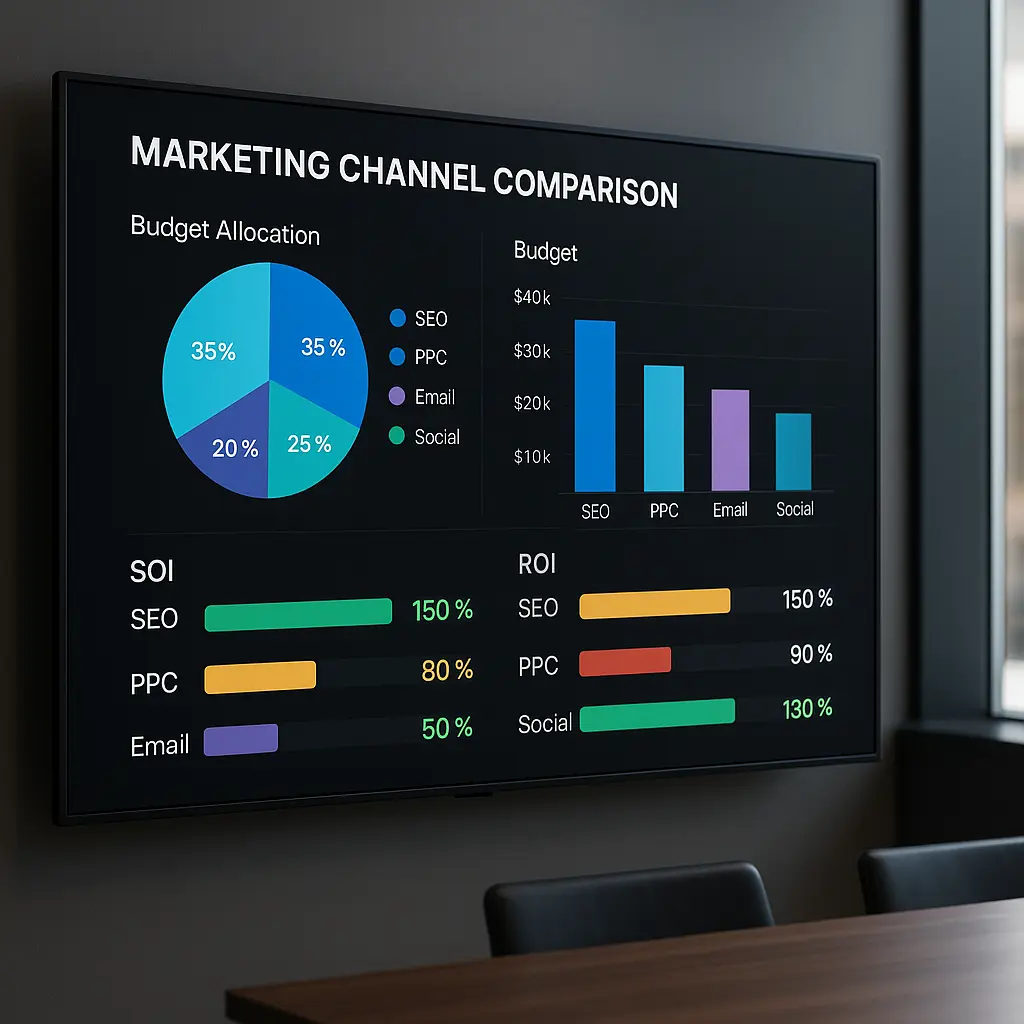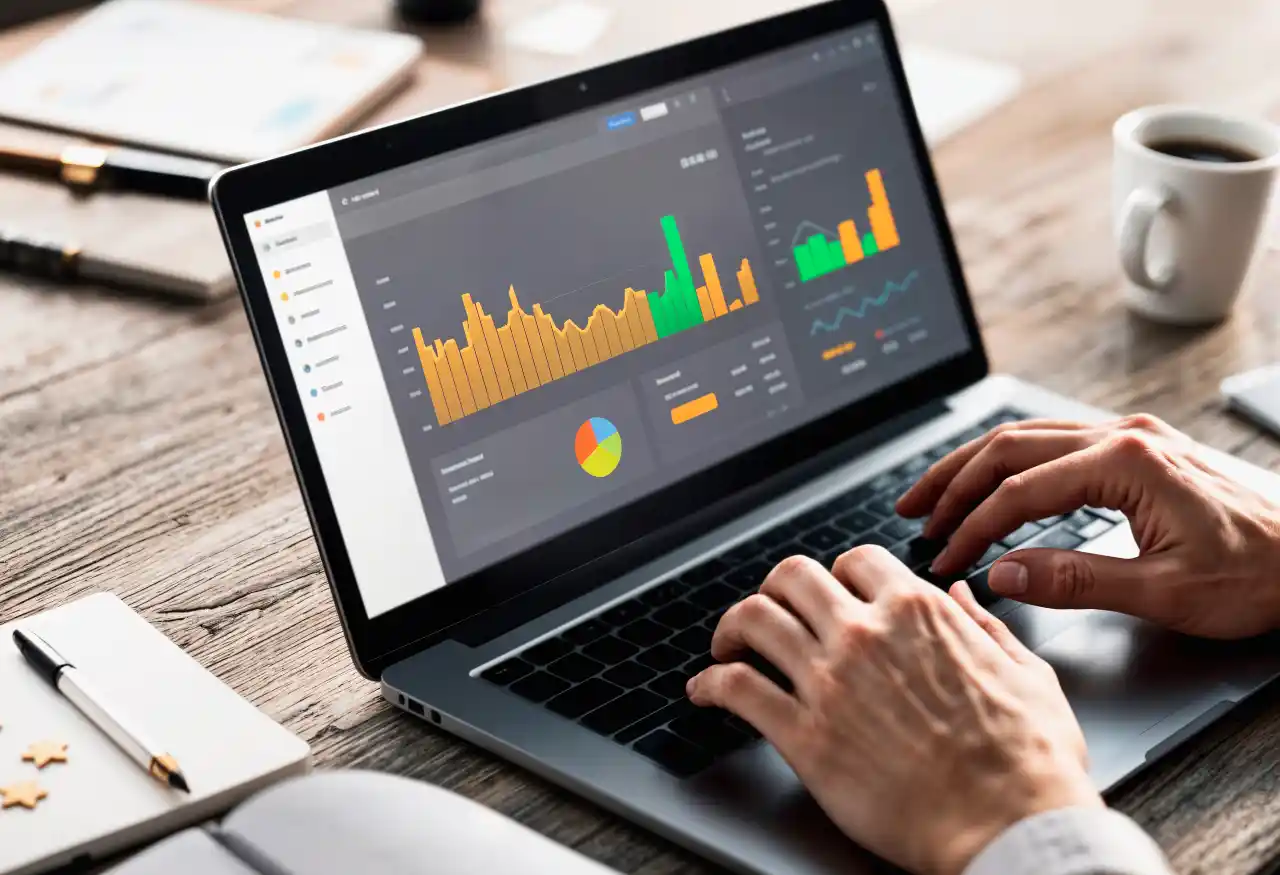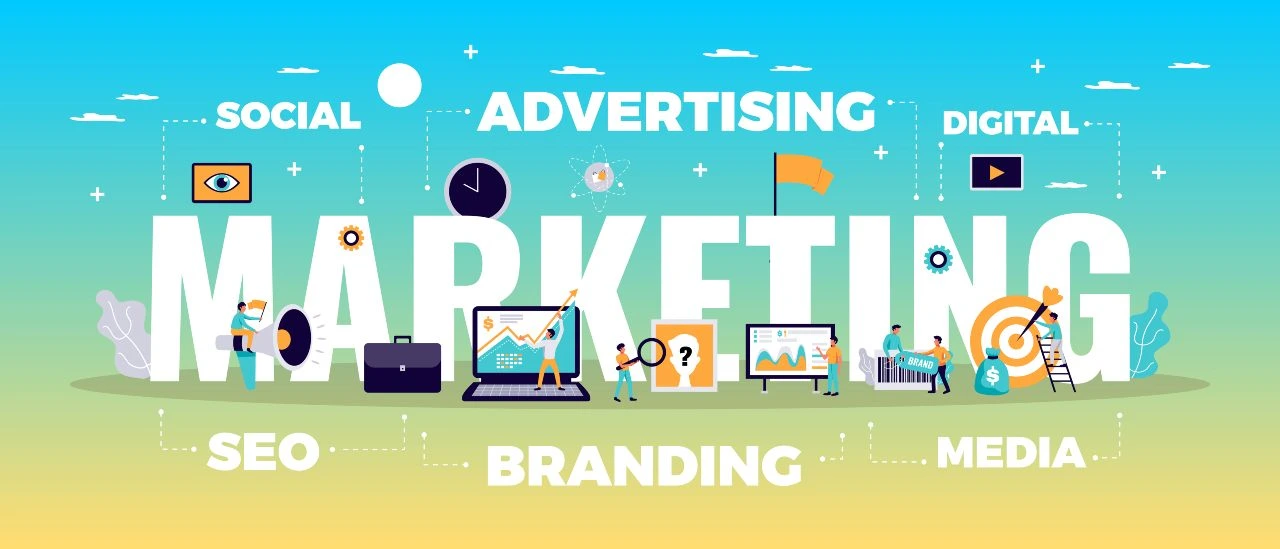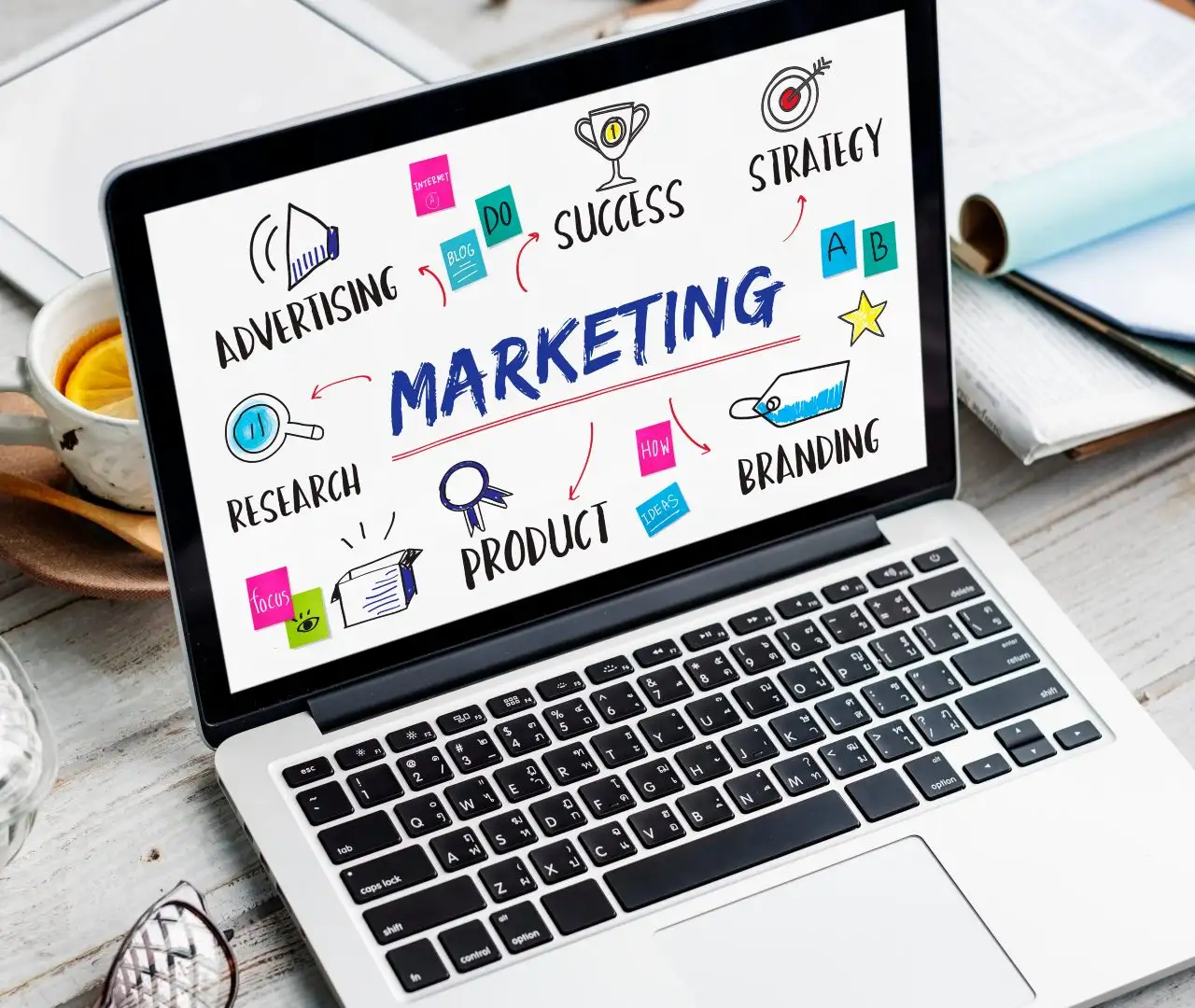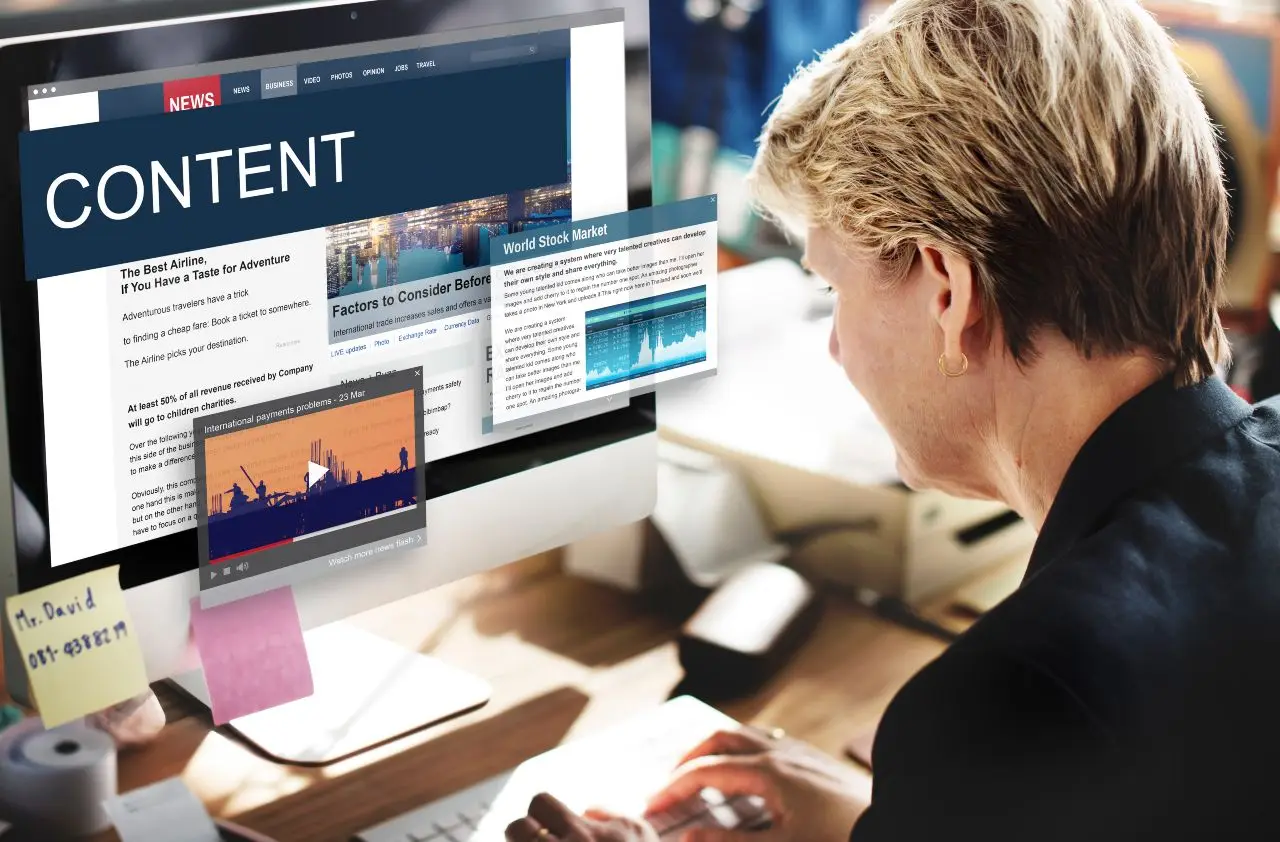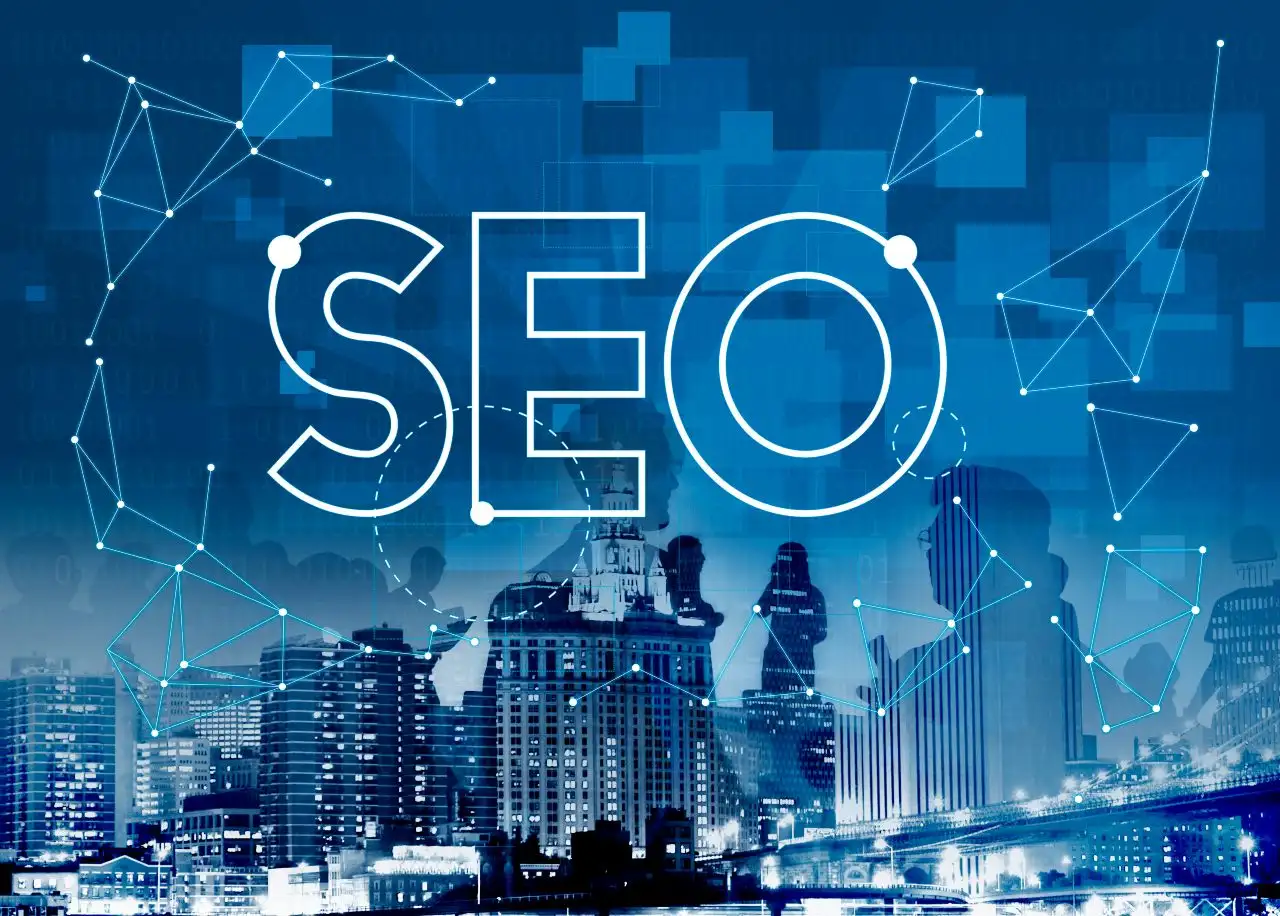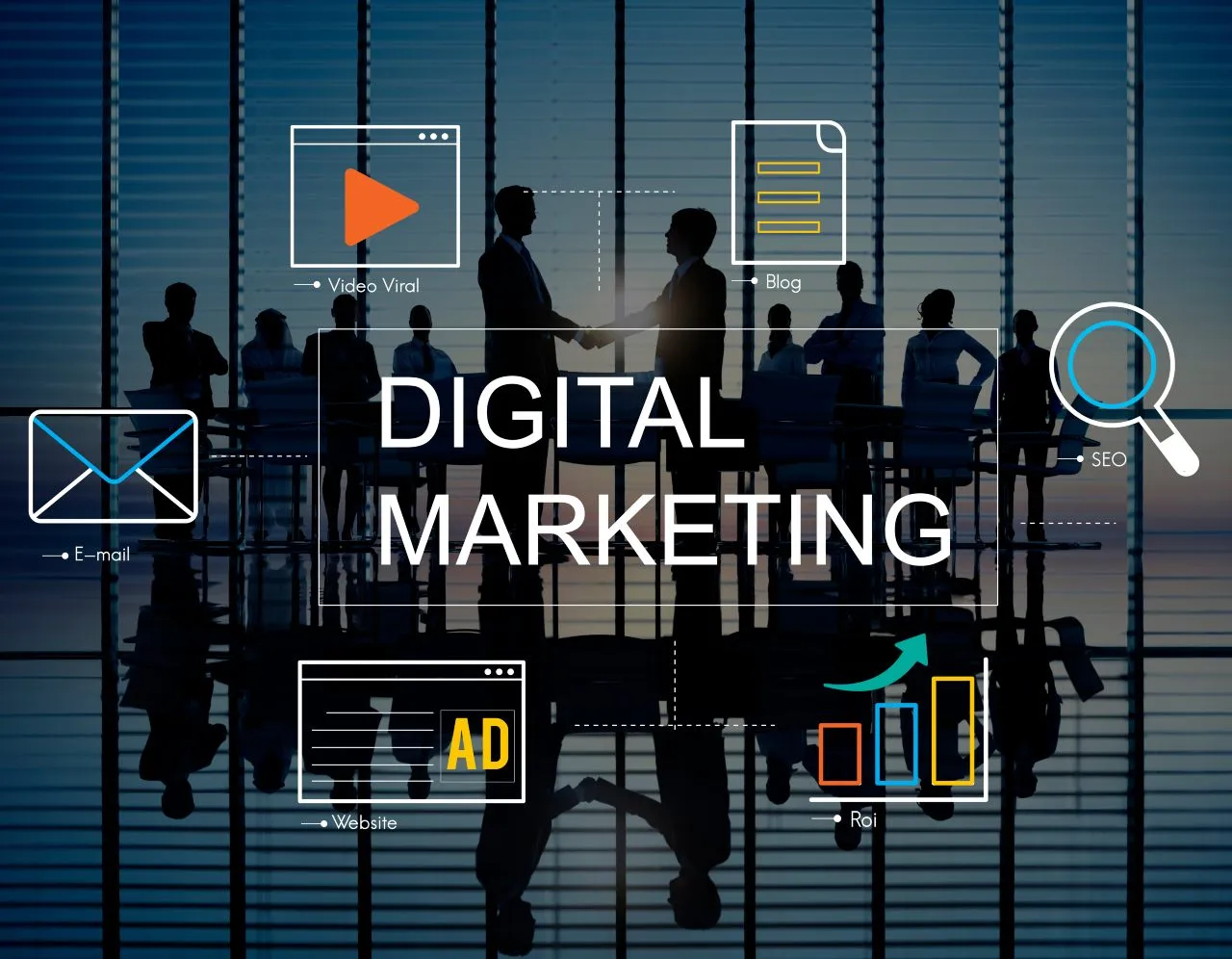Listen to article
With economic headwinds and rapidly evolving digital landscapes, smart marketing budget planning for 2025 has become more critical than ever. Where should you invest your marketing dollars to ensure the best return? The answer lies in understanding the latest trends and statistics that are shaping the marketing world.
From the cookieless future to the ever-increasing dominance of mobile and social media advertising, marketers are constantly adapting their strategies. But which channels truly deliver the maximum ROI? How can you optimize your PPC investments and leverage integrated marketing strategies to enhance your campaign efficiency?
This article dives deep into the data, offering actionable insights and a pro tip for each section to help you make informed decisions and optimize your marketing budget for 2025!
Preparing Your Strategy for a Cookieless Era
The impending transition away from third-party cookies is more than a technological shift—it’s a fundamental change in how brands interact with and understand their audiences. As digital privacy regulations evolve and consumer expectations for transparency rise, marketers must embrace innovative, privacy-first approaches to avoid losing relevance. Yet, recent data reveals that many businesses remain hesitant or unprepared to tackle this challenge.
- Google has announced that it will officially phase out third-party cookies in its Chrome browser by July 2024. Source
- Surprisingly, 41% of marketers report no plans to adopt cookieless targeting methods. Source
- A mere 25% of marketers plan to shift their focus to first-party data collection as the cookieless age looms. Source
The reality is that passive approaches will not suffice in this new landscape. Brands that harness the power of first-party data, diversify their targeting tactics, and prioritize consumer trust will be better positioned to not only survive but thrive. Marketers who lag behind risk being caught flat-footed at a time when competition for user attention is fierce.
Pro Tip:
Start cultivating data right now by building robust email lists, engaging in loyalty programs, and leveraging zero-party data (information voluntarily shared by customers, like preferences or purchase intent). Complement this with privacy-first strategies like contextual advertising and AI-driven predictive modeling to keep your campaigns relevant and effective. For businesses navigating this transformation, adopting B2B website strategy best practices can also ensure their online presence aligns with these privacy-focused shifts.
Key Trends in B2B Marketing Budgets: Content, Social Media, and Email Take Center Stage
As economic uncertainty continues to affect decision-making, B2B marketers are focusing their resources on channels that not only drive measurable outcomes but also strengthen long-term customer relationships. Investments in content marketing, social media, and email marketing reflect a strategic pivot toward platforms that deliver sustained ROI and adaptability, even in unpredictable market conditions. While these priorities showcase a commitment to reliable performance, they also highlight the increasing need for precision in budget planning to stay competitive.
- Almost half (45%) of B2B companies plan to increase their content marketing spend in the next year, highlighting confidence in its ability to engage audiences over time. Source
- Social media is another priority, with 56% of B2B marketers intending to boost their social media budgets, demonstrating a push to grow brand visibility and community building. Source
- Email marketing remains a cornerstone, as 40% of B2B marketers aim to increase their investment in this high-performing channel. Source
- Not all companies are upping their spending: 42% of B2B businesses plan to maintain their current content marketing budgets. Source
- A smaller segment is re-evaluating their approach, with 6% planning to cut content marketing spend and 7% still undecided about their budget allocations. Source
Takeaway: Focus on Agile Investments to Drive Results
The data underscores a clear trend—B2B companies are leaning on proven, adaptable channels like content, social media, and email to navigate competitive landscapes and shifting buyer behaviors. However, the mix of increased investments, budget stasis, and cutbacks suggests that while many businesses see the value in doubling down on high-ROI strategies, some are treading cautiously. To stay ahead, marketers must continuously evaluate which channels align best with their goals and adjust in real time to market shifts.
Pro Tip:
To maximize the impact of your budget, prioritize campaigns with clear metrics, such as lead-to-conversion rates for email or engagement growth on social channels. Tools like HubSpot, Sprout Social, or even Google Analytics can help refine your approach to ensure every dollar spent delivers measurable outcomes.
Mobile Advertising Trends: Growth, E-Commerce Dominance, and AI Innovation
As consumer attention migrates steadily towards mobile platforms, the dominance of mobile advertising in the digital marketing sphere cannot be overstated. Mobile ad spending is surging globally, fueled by both the rapid expansion of e-commerce and the explosion of short-form video content on social media. Meanwhile, AI-driven personalization has emerged as a game-changer, giving marketers the tools to deliver tailored, hyper-relevant experiences that convert browsers into buyers. To stay ahead, brands must not only adapt to these shifts but also proactively embrace the possibilities that AI brings to mobile campaigns. Let’s break down the numbers shaping the future of mobile advertising.
- Global mobile ad spending is forecasted to hit $402 billion in 2024, an 11% year-over-year increase, with social video platforms driving much of this growth. Source
- In the U.S., mobile ad spending is expected to surpass $216 billion in 2024, reflecting an 11.1% jump from the $194.8 billion spent in 2023, though growth is slowing compared to previous years. Source
- By 2028, mobile will account for 70% of total global advertising spend, becoming the dominant channel for marketers worldwide. Source
- Mobile devices lead in e-commerce, contributing 55.25% of all online transactions, eclipsing desktop sales. Source
- Smartphones represented more than 75% of U.S. retail site visits and drove 66% of online shopping orders during Q1 2024. Source
- AI-driven personalization is expected to dominate mobile advertising by 2025, empowering brands with the ability to craft bespoke content tailored to user preferences. Source
- AI helps brands enhance customer experiences by analyzing extensive datasets to forecast user behavior and deliver timely, relevant content. Source
- Employing AI insights can drive higher engagement, stronger brand loyalty, and better conversion rates by ensuring that every touchpoint aligns with consumer expectations. Source
Takeaway: Prioritize Mobile and Personalization to Lead in the Digital Age
Mobile advertising is no longer about following trends—it’s about staying at the forefront of where consumers are spending their time, money, and attention. The marriage of mobile-first strategies with AI-driven personalization marks the next evolution of marketing, enabling brands to break through the noise and engage users at a deeper, more meaningful level. As mobile increasingly dominates ad spend and online transactions, the brands that thrive will be those who treat their mobile campaigns not as an extension of digital, but as its core.
Pro Tip:
To maximize the impact of your mobile marketing efforts, focus on platforms where mobile consumption is highest—think TikTok, Instagram Reels, and other video-heavy environments. Augment your campaigns with AI-powered tools to track behaviors in real time, allowing you to refine your outreach and deliver personalized experiences at scale.
Unlocking the True Potential of Social Media Advertising
The complexity of social media advertising stems from its rapid evolution and the diverse nature of its platforms. As businesses navigate marketing during uncertain economic times, they must leverage data-driven insights to allocate resources effectively. Understanding where audiences are most engaged, how ROI varies by platform, and the growing role of mobile devices is critical for creating impactful campaigns that deliver measurable results.
- Global spending on social media advertising is projected to more than double from $116 billion in 2021 to over $262 billion by 2028, underscoring its critical role in the modern advertising ecosystem. Source
- Mobile ad spending is expected to hit nearly $400 billion by the end of 2024, reflecting the ever-growing dominance of mobile in digital advertising strategies. Source
- Total ad spend on social media is set to reach $220 billion in 2024. Source
- TikTok leads with unmatched engagement, as 38% of its users are open to advertisements, far surpassing the 4% receptiveness of general internet users. Source
- 84% of B2B marketers rank LinkedIn as the most valuable social media platform for their campaigns. Source
- Social media advertising now makes up an average of 28.8% of total ad spending, making it a core component of many marketing budgets. Source
- Facebook ads achieve an average conversion rate of 9.21%, making it a top contender for performance marketing campaigns. Source
- Facebook and Google Ads are recognized as the most ROI-positive paid advertising channels for businesses. Source
- 55% of users have purchased a product after discovering it on social media, highlighting the platform’s power in driving consumer action. Source
- TikTok users spend an average of 52 minutes daily on the platform, illustrating its immense engagement potential. Source
Takeaway: Strategic Allocation Leads to Stronger Outcomes
Social media advertising is no longer a “nice-to-have” but a must-have for businesses aiming to reach and convert diverse audiences. However, the key to success lies in selecting platforms aligned with your goals and audience behavior. While TikTok shines with its high levels of ad engagement and user activity, LinkedIn dominates B2B marketing due to its unparalleled targeting capabilities for professional audiences. Similarly, Facebook and Google Ads continue to deliver reliable ROI across industries. Brands need to continuously test, optimize, and refine their strategies to avoid one-size-fits-all campaigns.
Pro Tip:
Use analytics tools like Meta Ads Manager, LinkedIn Campaign Manager, or TikTok for Business to monitor ad performance and continually optimize your campaigns. Lean into platform-specific strengths—such as TikTok’s format for short, creative bursts or LinkedIn’s professional insights—for better engagement and conversions.
Mastering PPC Strategies: Balancing Platforms, Costs, and Devices for Maximum ROI
Navigating the world of pay-per-click (PPC) advertising is no longer just about spending big—it’s about spending smart. Marketers face the dual challenge of leveraging Google’s immense reach while also diversifying their strategies to unearth cost-effective and untapped opportunities. Add device-specific user behavior to the mix, and PPC planning becomes a precision game. By understanding platform dominance, alternative cost structures, and device-driven engagement trends, you can unlock higher ROI and ensure your PPC dollars are working as hard as possible.
Google’s Unrivaled PPC Performance
It’s no secret that Google dominates the PPC ecosystem, but the scale of its influence reveals why it’s often non-negotiable in advertising strategies. However, brands must strike a balance between leveraging this behemoth and avoiding over-dependence. Here’s what the numbers tell us:
- Google generates an astounding 97% of its revenue from PPC advertising, cementing its position as the go-to paid online advertising platform. Source
- PPC ads on Google dominate user attention, capturing 64.6% of all clicks, far outpacing organic results for high-commercial-intent searches. Source
- Google outperforms competitors like Amazon, YouTube, and Bing, with 63% of people more likely to click on its paid search ads compared to 15%, 9%, and 6% on those platforms, respectively. Source
While continuing to reap the benefits of Google’s massive reach, consider the risks of leaning too heavily on one platform. Diversifying your ad spend across multiple channels can help safeguard your strategy from diminishing returns or sudden policy changes.
Cost-Efficient Alternatives to Stretch Your Budget
In a world where every CPC counts, exploring PPC platforms beyond Google is not just an option—it’s a strategic advantage. Microsoft Ads, including Bing, offer marketers a cost-effective touchpoint to reach new audience segments with impactful results:
- Bing Ads maintain a competitive edge, with average CPC costs 33% lower than Google Ads. Source
- 24% of businesses report paying between $0.11 and $0.50 per click on Microsoft Ads, offering exceptional ROI potential for budget-conscious campaigns. Source
By testing platforms like Microsoft Ads, brands can access a unique audience—one that may not be reachable on Google—while benefiting from reduced bidding competition. Diversifying your PPC investments protects your budget while opening doors to new customer acquisition opportunities.
Prioritizing Devices: The Desktop-to-Mobile Balance
Device behavior plays a pivotal role in PPC strategy, particularly as the gap between desktop and mobile engagement continues to evolve. Understanding where your users convert versus where they engage is crucial for optimizing ad spend:
- Mobile devices drive the highest global bounce rate at 52.11%, indicating a need for strong, mobile-specific ad experiences. Source
- Desktop devices still outperform mobile in conversions, boasting a rate of 3.7% compared to mobile’s 2.2%. Source
A dual-focus approach ensures no device is underserved. Invest in seamless, mobile-first experiences to retain traffic and lower bounce rates while maintaining robust desktop optimizations to capture high-intent users primed for conversion.
Key Takeaway: Smarter Allocation Leads to Smarter Results
For marketers navigating PPC’s multilayered ecosystem, success lies in balance. Google is undeniably essential, but relying solely on one platform limits growth, engagement, and budget efficiency. Incorporate cost-efficient alternatives like Bing Ads to stretch your resources, and refine device-specific campaigns to maximize traffic and conversions across all touchpoints.
As you diversify and optimize your PPC efforts, lean on performance tracking tools to evaluate channel performance in real-time. Tools like Google Analytics, SEMrush, and Optimizely can help gauge which platforms and devices are generating the highest ROI, allowing you to reallocate resources dynamically for continued success.
Smarter Channel Investments: Where ROI Truly Shines
Maximizing marketing ROI isn’t just about spending more—it’s about understanding which channels deliver the greatest impact and allocating resources strategically. As consumer behavior becomes more data-driven and intent-focused, businesses need to be agile in adapting their budget strategies. From email marketing’s unbeatable returns to the purchase-driving potential of PPC, the right channels can transform a marketing budget from a cost center into a growth engine.
- Email marketing continues to deliver exceptional ROI, consistently ranking as a top performer alongside SEO, mobile marketing, and content marketing. Source
- Paid ads placed on Google’s first page achieve an average click-through rate (CTR) of 3.16%. Source
- Visitors clicking on ads are twice as likely to make a purchase as those entering through organic search. Source
- PPC visitors are 50% more likely to convert than those arriving through organic traffic. Source
- 62% of marketing teams increased their PPC budgets last year, underscoring its perceived value. Source
- High-intent searches result in an ad click 65% of the time, providing a reliable source of quality leads. Source
- Alarmingly, 72% of companies admit to not reviewing their ad campaigns in over a month, which wastes valuable ad spend. Source
The key takeaway for marketers? Leverage data to identify the channels that deliver the highest ROI and adapt your strategies accordingly. While email marketing and SEO consistently perform as cost-effective tools, PPC’s ability to target high-intent audiences offers a powerful opportunity for immediate conversions. However, many businesses risk losing ROI by neglecting campaign audits, which are critical for fixing inefficiencies and reallocating resources in real time.
Invest not just in the right channels, but in the tools and processes that help you track, analyze, and refine your campaigns. Consider automated dashboards and AI-based analytics tools to monitor performance and set up reminders to review campaigns regularly. Avoid the “set it and forget it” trap—proactive adjustments are the secret to sustained marketing success.
Maximizing ROI with Smart, Data-Driven Strategies
Marketers are navigating a period where every dollar spent demands accountability and proven results. With tighter budgets and increased scrutiny from stakeholders, embracing a data-first approach is no longer optional—it’s essential. The shift toward ROI-focused planning is driving the need for clear metrics, better data utilization, and more thoughtful budget allocation. Let’s explore some telling statistics that shed light on this shift:
- 60% of marketers feel their budgets and ROI are being monitored more closely now than in the past. Source
- 75% of marketing planners express concerns about cost control, while ROI remains a critical priority for 60% of them. Source
- 47% of marketers are failing to track ROI from content marketing, highlighting a gap in analyzing marketing performance effectively. Source
- Companies with a content marketing budget below $15,000 per month are 74% more likely to report poor performance compared to those that invest more. Source
- 44% of businesses lack a quantitative understanding of their marketing impact, indicating a pressing need to refine measurement practices. Source
- 87% of marketers admit that data is the most underutilized business asset, presenting enormous potential for improved ROI. Source
- Over one-third of marketing leaders identify conversion rates as their most critical KPI. Source
The Path Forward: Balancing Investments with Results
The need for accountability in marketing budgets is reshaping how companies approach strategic planning. Marketers must not only track ROI but also align spending with measurable outcomes to defend their budgets and foster long-term growth. Data-driven insights offer a competitive advantage: they help you identify underperforming strategies, reallocate resources effectively, and maximize the impact of your efforts.
Don’t wait for budget reviews to showcase your marketing performance. Implement regular ROI tracking tools such as Google Analytics, HubSpot, or Tableau to generate insights in real-time. This equips you with the data necessary to justify investments, refine campaigns, and gain stakeholder confidence.
Integrated Marketing for Greater Success
For brands navigating increasingly competitive markets, delivering a unified message across channels isn’t just smart—it’s essential. Integrated marketing strategies ensure your audience experiences consistent storytelling and messaging, fostering trust and recognition while driving higher returns. But the true beauty of integration lies in its ability to cut through silos, simplify processes, and supercharge efficiency, which is critical in an era of fragmented attention spans. The following statistics underscore just how transformative an integrated approach can be:
- Businesses that adopt an integrated marketing strategy see an average of 50% more ROI from their campaigns. Source
- Aligning marketing teams and unifying channels can boost campaign efficiency by 31%. Source
- 64% of marketers report feeling overwhelmed by overly complex martech stacks, reinforcing the need for integration within technology ecosystems. Source
Takeaway: Simplicity Drives Success
Integrated marketing isn’t just an operational improvement—it’s a strategic advantage. By aligning teams, consolidating tools, and delivering consistent messaging, companies can accelerate results while reducing inefficiencies that stem from disjointed efforts. In industries where time to market and resource efficiency are critical, integration becomes a non-negotiable component for success.
Regularly audit both your marketing operations and martech stack to eliminate redundancies and ensure seamless integration. Tools like HubSpot, Salesforce, and Zapier can help bridge gaps between platforms, enabling a more streamlined and results-driven workflow. An integrated foundation isn’t just about tech; it’s about empowering your team to innovate smarter, not harder.
For smaller businesses, adopting integrated strategies can often seem daunting due to limited resources. That’s why many turn to full-service marketing providers who can handle everything from SEO to email marketing, ensuring a cohesive approach across all digital channels. These services allow businesses to focus on their core operations while experts manage their marketing efforts for maximum impact.
Prioritizing Purposeful Content: The New Standard for Marketing Success
In today’s increasingly competitive digital landscape, the philosophy of “less is more” is redefining content strategies. Audiences are no longer impressed by sheer volume—they demand substance, relevance, and authenticity. This strategic pivot toward meaningful content reflects a shift in how brands view engagement: not as a numbers game, but as a value-driven connection. For businesses, this trend underscores the growing importance of not just having a voice, but ensuring that every message adds clarity and insight to the conversation.
- A striking 83% of marketers now prioritize content quality over quantity, even if that means scaling back on publishing frequency. Source
- Seventy percent of organizations have woven content strategy into their overarching marketing, sales, and communication blueprints. Source
- Only 17% of companies operate with a stand-alone content marketing strategy, reflecting a growing preference for integrated approaches. Source
- Just 9% of organizations admit to not having any form of content strategy, highlighting its near-universal adoption. Source
Takeaway: Quality Content Is a Non-Negotiable Investment
The numbers tell a clear story: brands are moving beyond the era of content overload to focus on thoughtful, strategic messaging that elevates audience connections. This doesn’t just enhance engagement; it strengthens brand reputation and builds trust over time. As you plan your marketing budgets for the future, it’s critical to allocate sufficient resources to high-quality content creation that aligns with your broader business goals. Content is no longer just a marketing tool—it’s the foundation of long-term customer relationships and loyalty.
To maximize the ROI of your content efforts, evaluate its performance regularly and make adjustments based on what resonates most with your audience. Consider leveraging analytics tools to identify high-performing content formats, topics, and distribution channels. Additionally, collaborating with subject matter experts or your audience (via user-generated content) can provide unique perspectives that enhance credibility and relatability.
Conclusion
Marketing budget planning for 2025 demands precision, adaptability, and a data‑driven mindset. From preparing for a cookieless future to prioritizing mobile advertising and investing in high‑quality content, one theme is clear: businesses that align spending with ROI‑focused channels and emerging technologies will lead the way.
The insights above highlight that integrated strategies and smart allocation are no longer optional—they’re essential. By combining proven tactics with innovation, you can maximize returns while staying agile in an unpredictable landscape.
Ready to turn these insights into action? Partner with our AI digital marketing agency and make 2025 your most impactful marketing year yet.
About Creating Marketing Budget Planning in Uncertain Times: What the Data Recommends
This guide was written by the Scopic Studios team and reviewed by Araksya Hakobjanyan, SEO Lead at Scopic Studios.
Scopic Studios delivers exceptional and engaging content rooted in our expertise across marketing and creative services. Our team of talented writers and digital experts excel in transforming intricate concepts into captivating narratives tailored for diverse industries. We’re passionate about crafting content that not only resonates but also drives value across all digital platforms.
Note: This blog’s images are sourced from Freepik.


































